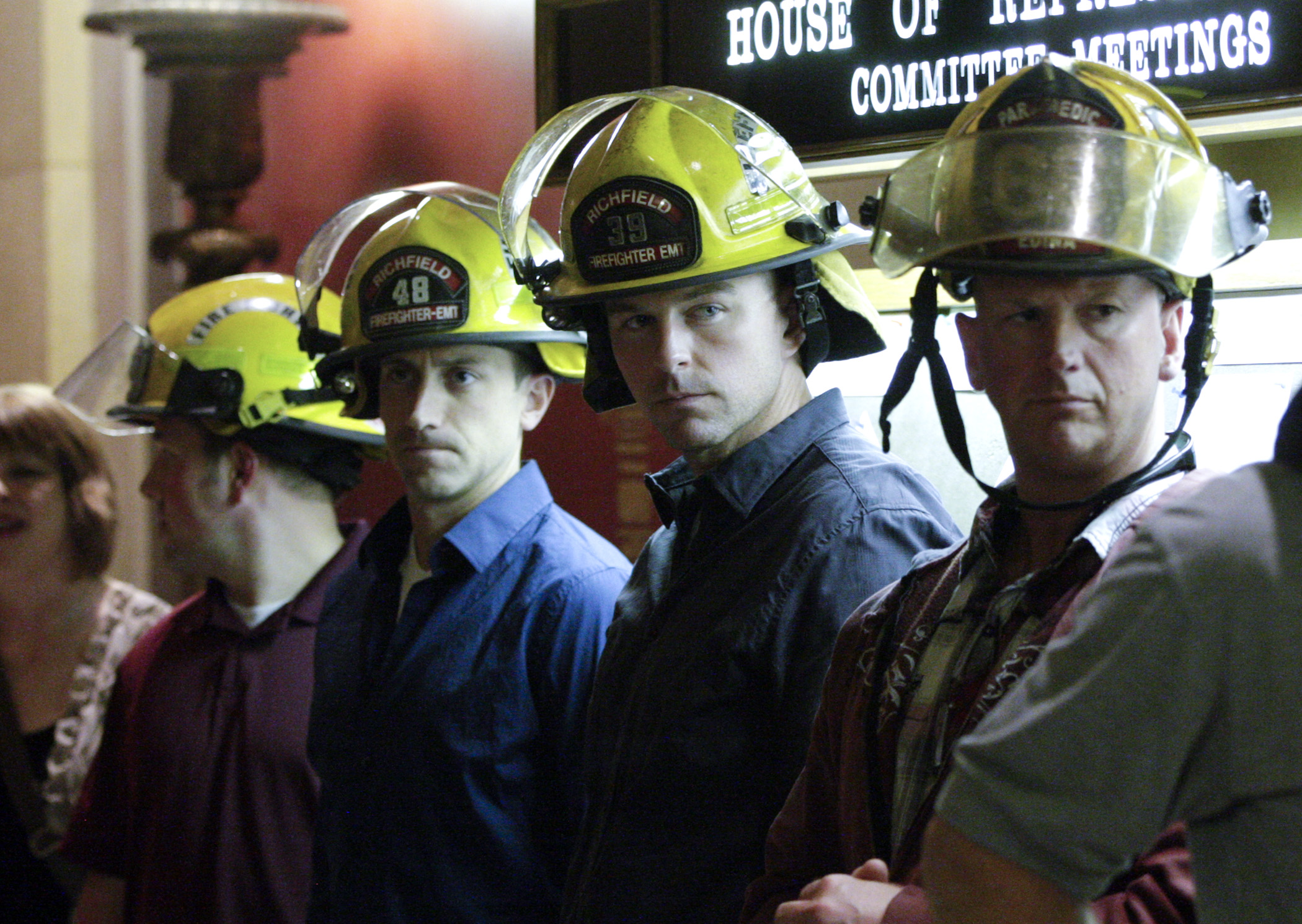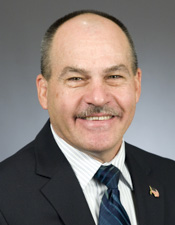List of fire retardants in proposed ban cut from 10 to four

The House Commerce and Regulatory Reform Committee whittled the number of fire retardants in a proposed ban from 10 to four Monday.
Concerns that the chemicals are causing firefighters’ rising rates of cancer are fueling efforts to get them out of products in homes and other structures.
“Thirty years ago, I fought to get these chemicals in,” said Rep. Jeff Howe (R-Rockville), a retired firefighter and sponsor of HF1100/SF1215* with Sen. John Marty (DFL-Roseville). “Now I’m trying to remove some of these from the environment.”
In the version that passed the Senate 59-2 on April 28, the bill would ban 10 chemicals.
The commerce committee approved Howe’s amendment reducing the ban to four chemicals before sending the bill to the House Rules and Legislative Administration Committee.
The amended bill also includes a provision that would require the commissioner of health, in consultation with the state fire marshal, to produce a study of fire retardants’ effects and report to the Legislature by Jan. 15, 2016.
Meant to prevent or slow the spread of fire, the fire retardant chemicals help pollute a sooty “toxic soup,” according to Dr. Susan Shaw, a professor at the School of Public Health in the Department of Environmental Health Sciences at the State University of New York at Albany. She told the committee a connection between fire retardants and firefighters’ cancers is so far unproven, but circumstantial evidence suggests a link.
Firefighters become “sponges” or “welcome mats” for carcinogenic chemicals released by fire-retardant chemicals in burning furniture and other household materials, said Chris Parsons, Minnesota Professional Fire Fighters president, who said the bill doesn’t go far enough.
“I’m not happy about having to back off to the four chemicals we have [in the bill],” Parsons said. “It still gives us the strongest law in the country. We’ll be continuing to push it further.”
Representing the American Chemical Council, Dr. Thomas Osimitz and Dr. Robert Simon said broad bans were inappropriate for a range of products that are already subject to federal review.
State regulation of fire retardant chemicals shouldn’t take a “one size fits all” approach, said Tony Kwilas, environmental policy director at the Minnesota Chamber of Commerce.
Rep. Sarah Anderson (R-Plymouth) said she was concerned about residents of rural areas with longer response times from local fire departments, who benefit from any delay in a fire’s spread because of fire retardants. Shaw said retardants delay ignition by three seconds; Simon disagreed, calling the delay “significant.”
“I don’t think anybody’s really happy,” Howe said, “which probably means it’s pretty good legislation.”
The bill, as amended, would prohibit the manufacture, sale or distribution of children’s products or upholstered residential furniture containing the four chemicals in amounts greater than 1,000 parts per million, effective July 1, 2018. (Sales of previously owned products would be exempt.)
It would also prohibit replacement chemicals that “credible scientific evidence” has shown to:
- harm development in children or fetuses;
- cause cancer, genetic damage or reproductive harm;
- disrupt the endocrine or hormone system; or
- damage organs or the nervous or immune systems, or cause toxic conditions in other systems of the body.
The four chemicals that SF1215, as the commerce committee amended, would ban are:
- TDCPP (tris(1,3-dichloro-2-propyl)phosphate),
- decabromodiphenyl ether,
- hexabromocyclododecane, and
- TCEP (tris(2-chloroethyl)phosphate).
The six additional chemicals that the Senate bill would also ban are:
- tetrabromobisphenol A,
- antimony,
- tetrabromo phthalate (TBPH),
- tetrabromo benzoate (TBB),
- chlorinated paraffins, and
- tris(1-chloro-2-propyl)phosphate (TCPP).
Related Articles
Search Session Daily
Advanced Search OptionsPriority Dailies
Ways and Means Committee OKs proposed $512 million supplemental budget on party-line vote
By Mike Cook Meeting more needs or fiscal irresponsibility is one way to sum up the differences among the two parties on a supplemental spending package a year after a $72 billion state budg...
Meeting more needs or fiscal irresponsibility is one way to sum up the differences among the two parties on a supplemental spending package a year after a $72 billion state budg...
Minnesota’s projected budget surplus balloons to $3.7 billion, but fiscal pressure still looms
By Rob Hubbard Just as Minnesota has experienced a warmer winter than usual, so has the state’s budget outlook warmed over the past few months.
On Thursday, Minnesota Management and Budget...
Just as Minnesota has experienced a warmer winter than usual, so has the state’s budget outlook warmed over the past few months.
On Thursday, Minnesota Management and Budget...
